The Boundary Waters Canoe Area Wilderness in Minnesota is home to some of the world’s premier canoe paddling.
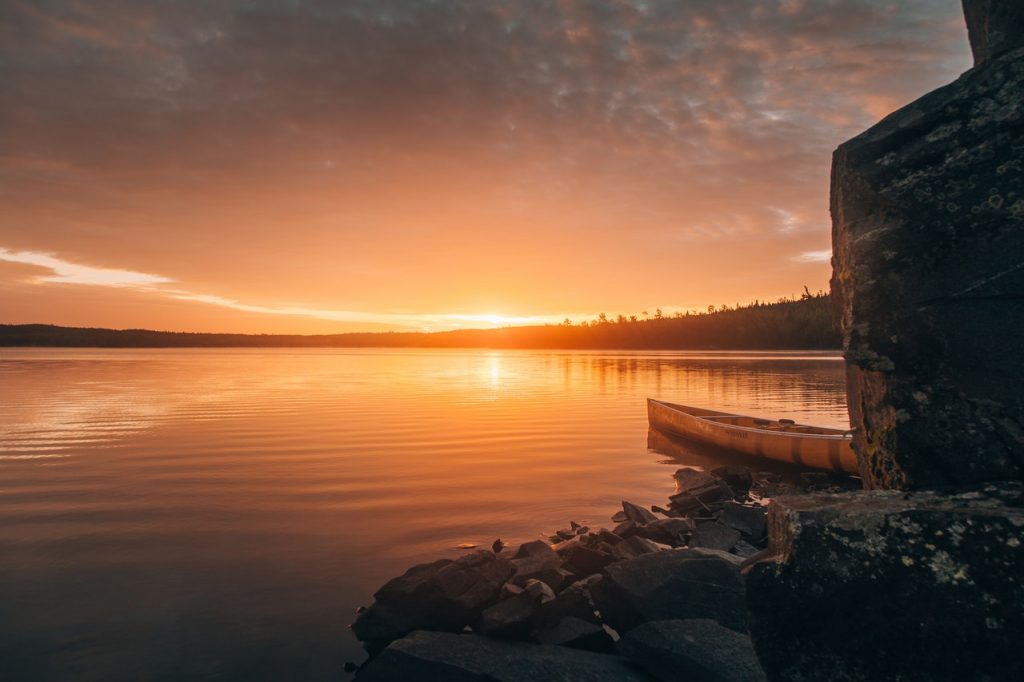
The Boundary Waters Canoe Area Wilderness is home to some of the world’s premier canoe paddling.
The sheer size of the Boundary Waters allows for as many weeks of adventure as you can spare. While certain areas are busy with paddlers at times, careful planning leads to solitude not readily found in other places. There are numerous reasons to fall in the love with the Boundary Waters. This includes seeing the Milky Way and the northern lights, cooking over a campfire every night and experiencing the lack of grizzly bears, mountain lions, snakes and scorpions.
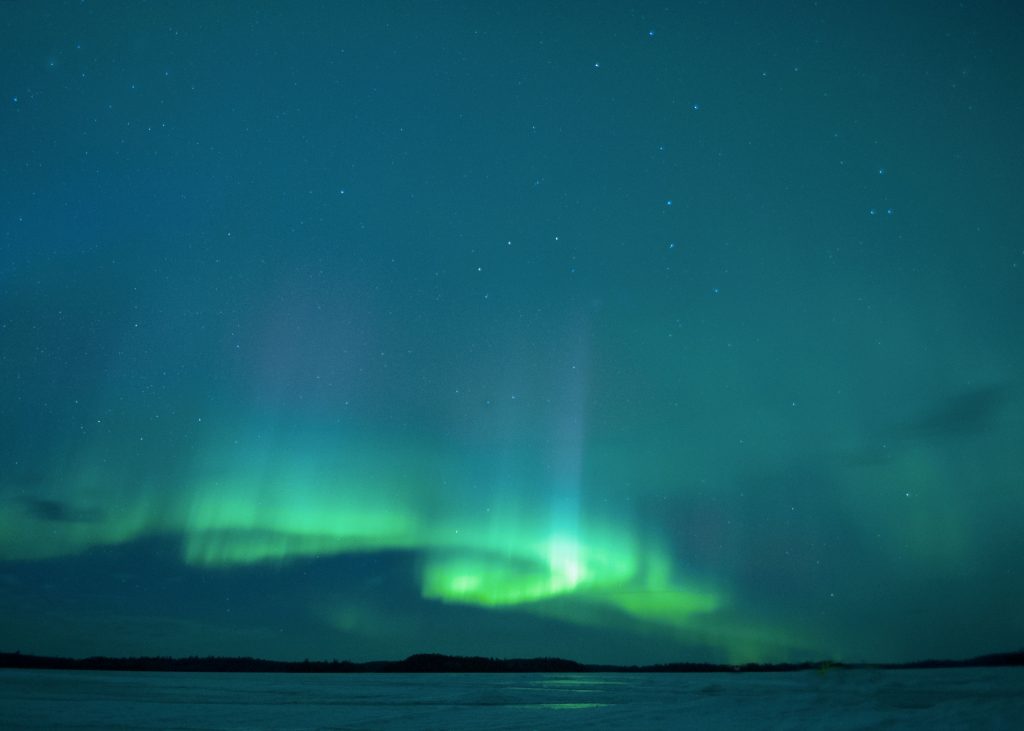
Due to no light pollution, the Boundary Waters offers incredible stargazing opportunities.
At over one million acres, this northern realm of lakes is America’s largest wilderness area east of the Rockies. On the Canadian side of the border, there are another million acres of Quetico Provincial Park. You can spend day after day connecting the dots between large and small lakes in the Boundary Waters, with streams or short portage trails between them. Campsites and fishing are plentiful. Visitor use is regulated by permitted entrance points at the ends of various, mostly gravel roads.
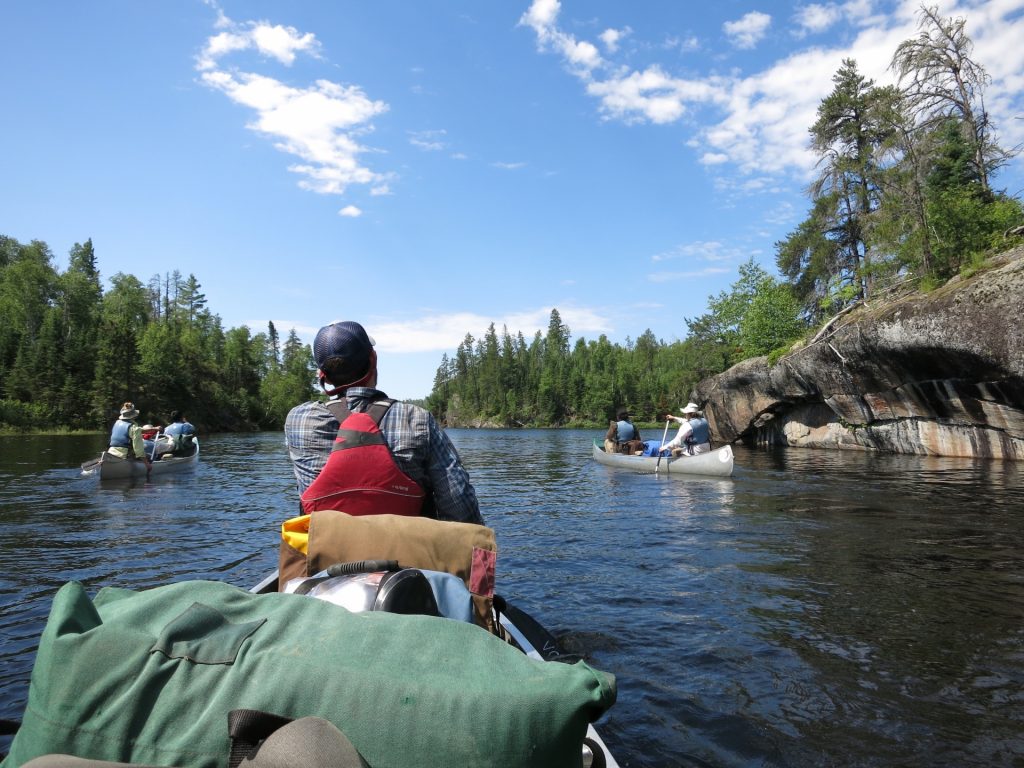
The Boundary Waters Canoe Area Wilderness is America’s largest wilderness area east of the Rockies, with over one million acres.
Protected since 1902, this area of the Northwoods has been shielded in part from logging, mining and tourism development, set aside for solitude and quieter modes of travel. Paddlers travel from all over the world to spend time in the Boundary Waters. Although it’s just as common to find a family from a neighboring state on vacation. The almost endless variety of lakes and trip routes allow for less-experienced paddlers to stay closer to the edges of the wilderness area, avoiding long portages or large, windy lakes. More experienced travelers work to get off the beaten path. They’re rewarded with moose sightings, wolves howling in the distance and fewer people around.
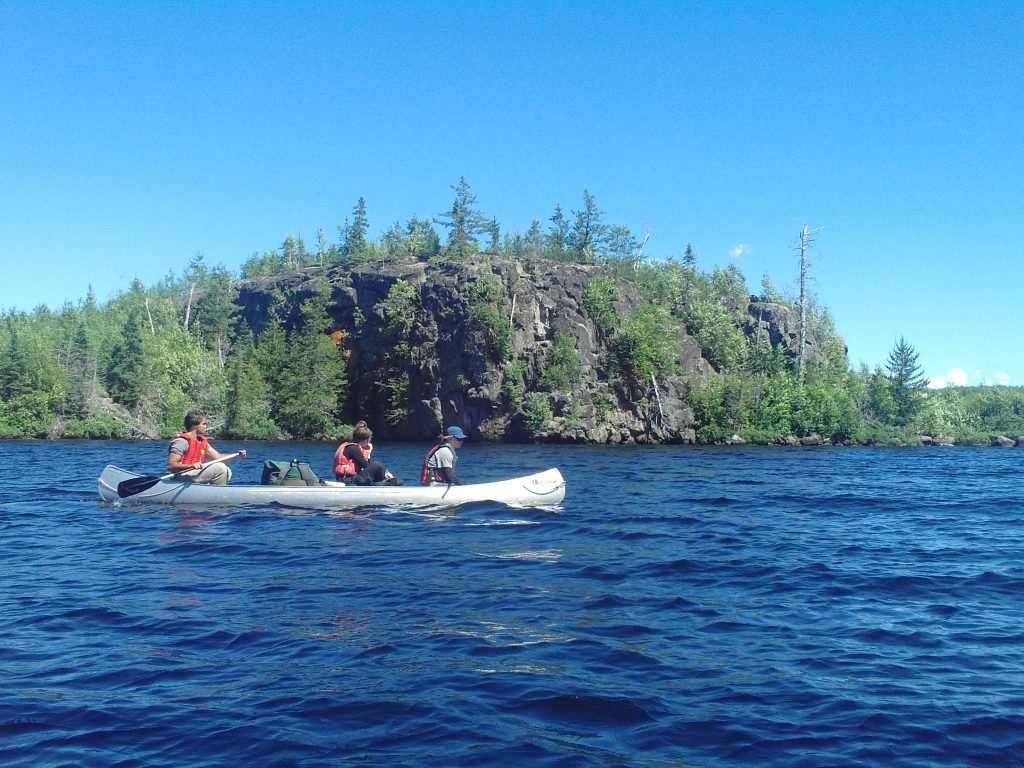
This area of the Northwoods has been shielded in part from logging, mining and tourism development, set aside for solitude and quieter modes of travel.
Local outfitters offer everything from pre-planned routes to meals and all the equipment you need. Permits are available from the US Forest Service through an online system. While weekend permits for certain spots can be difficult to get, planning a mid-week trip or being prepared to hike a bit to the entry point can help you find the permit you want.
Campsites are available on a first-come basis. Each campsite is equipped with a fire ring, tent pads and a pit toilet. Travelers must be prepared to bring all of their food and pack out all of their trash. They must also take precautions against any black bears habituated to human contact. Each campsite has a landing spot for canoes. Some have sandy beaches for swimming, while others have rocky high points perfect for watching the sunset. The mosquitoes can be fierce, making later in the summer and the fall the perfect time to skip the bugs.
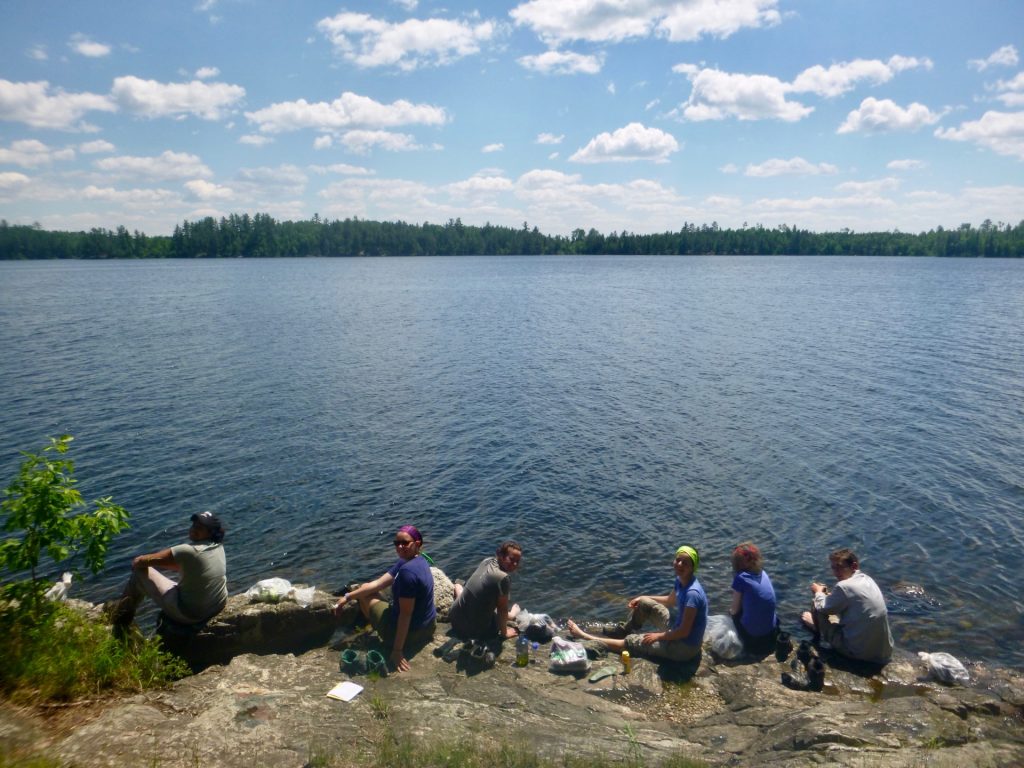
Each campsite has a landing spot for canoes, and some have sandy beaches for swimming, while others have rocky high points, perfect for watching the sunset.
Growing up in northern Minnesota, I spent a great deal of time in a canoe as a child. As I got older I took on more ambitious wilderness trips, and I learned more about the first inhabitants of the area: the Anishinaabe, or Ojibwe. Before their removal from their land, they traveled by canoe, fished the plentiful waters, harvested wild rice and left pictographs still visible today on certain cliffs in the wilderness. After experiencing Outward Bound as a teen, I went to work for Outward Bound in Minnesota, leading expeditions on the same lakes I paddled as a youth.
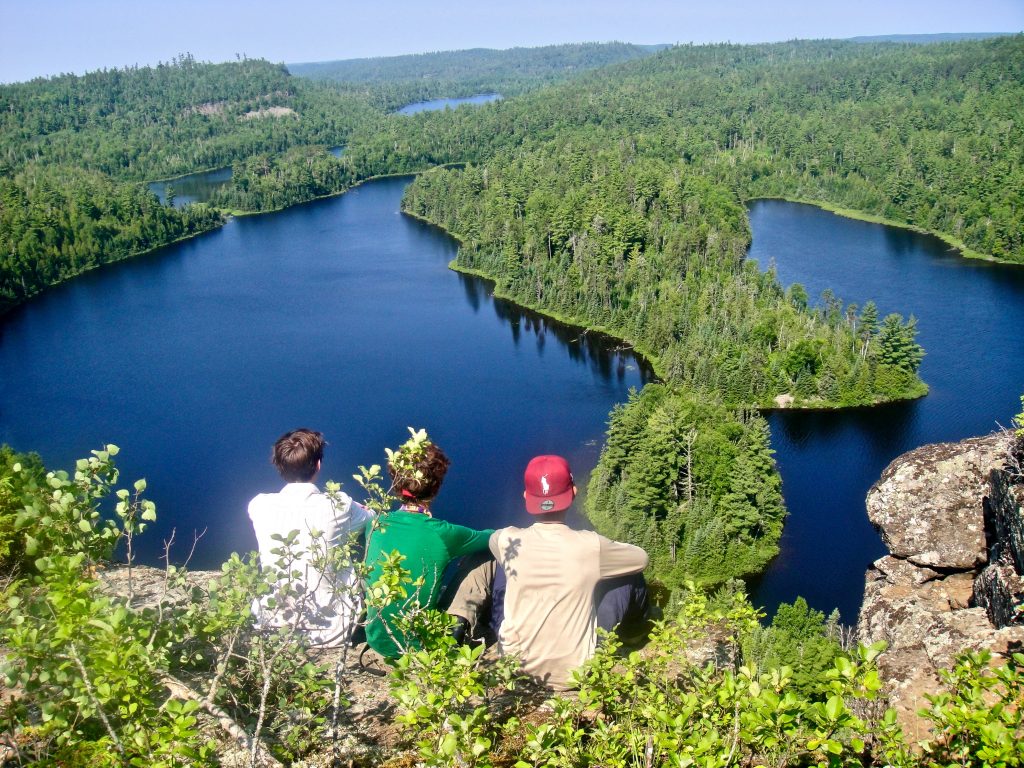
The first inhabitants of the area, the Anishinaabe, or Ojibwe, traveled by canoe, fished the plentiful waters, harvested wild rice and left pictographs still visible today on certain cliffs in the wilderness.
Outward Bound in the Boundary Waters
By exploring the Boundary Waters with Outward Bound, you’ll have the opportunity to master all of the paddling skills needed to be comfortable in the wilderness while seeing new lakes daily. Your crew will plot routes through the maze of lakes and make time to enjoy the beauty of blue skies and white clouds reflected perfectly in calm water. Traveling by canoe, you’ll have room in the boats for all the food you’ll need which eliminates the need for re-supply points and tight schedules. As cell phone reception and the sounds of modern life fade away, you’ll adjust to the pace of life by canoe. Find out what’s waiting for you in the Boundary Waters.
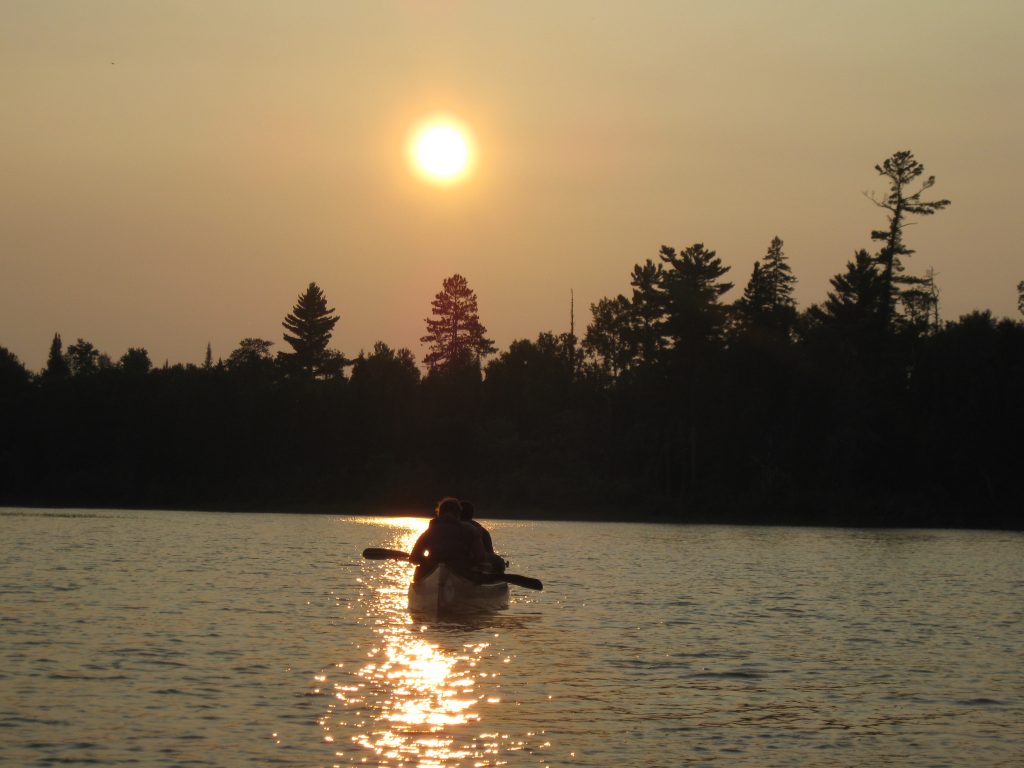
By exploring the Boundary Waters with Outward Bound, you’ll have the opportunity to master all of the paddling skills needed to be comfortable in the wilderness, while seeing new lakes daily.
About the Author
Renee Igo was an Outward Bound student at age 15, and has been instructing wilderness expeditions for the Voyageur Outward Bound School for the past eight years. When not instructing she holds a variety of other teaching positions and raises sheep in Maine.




